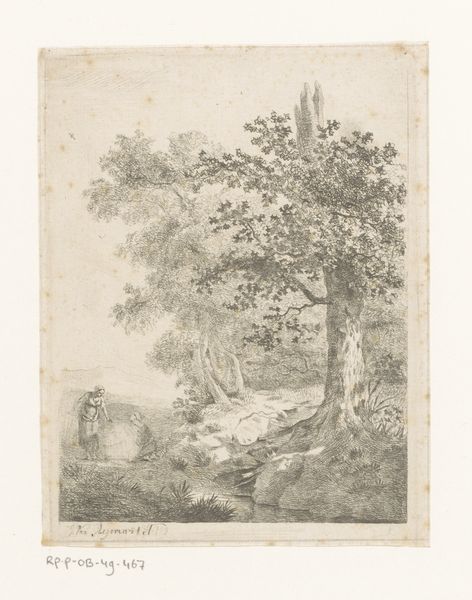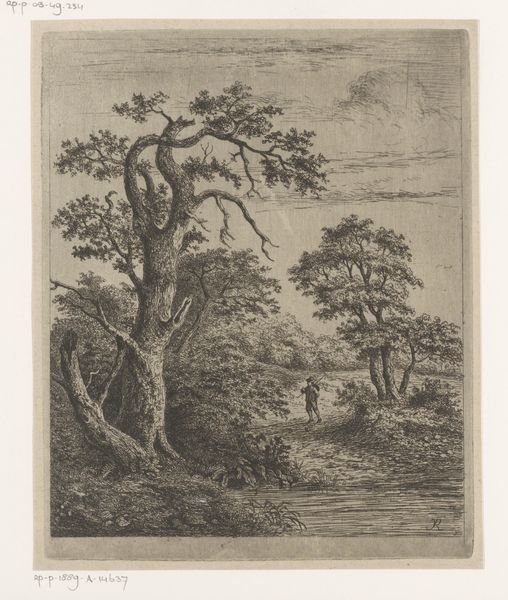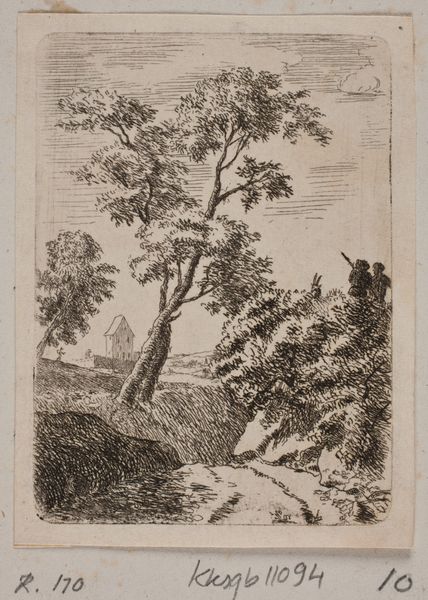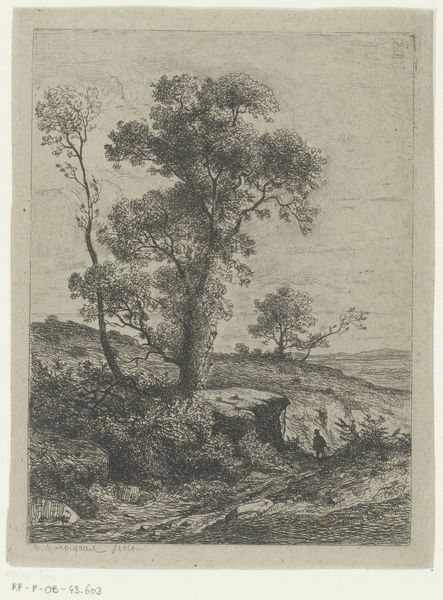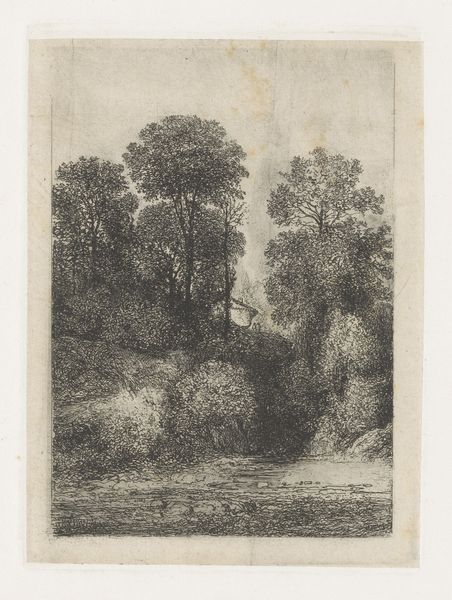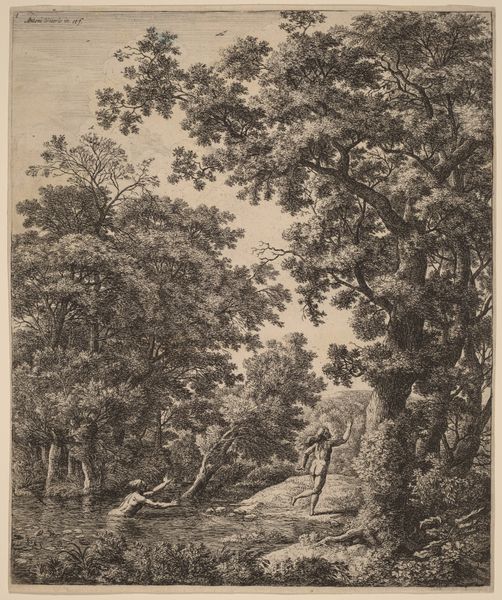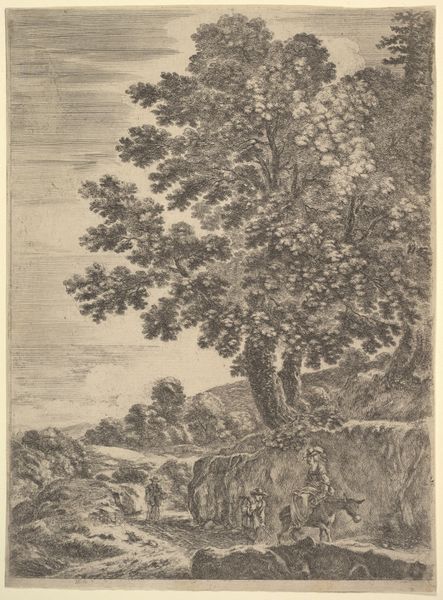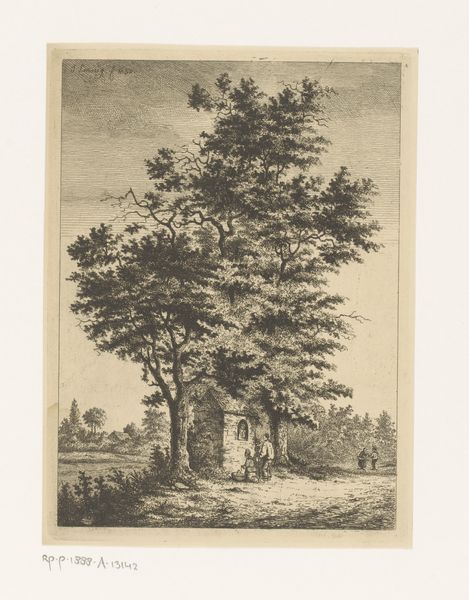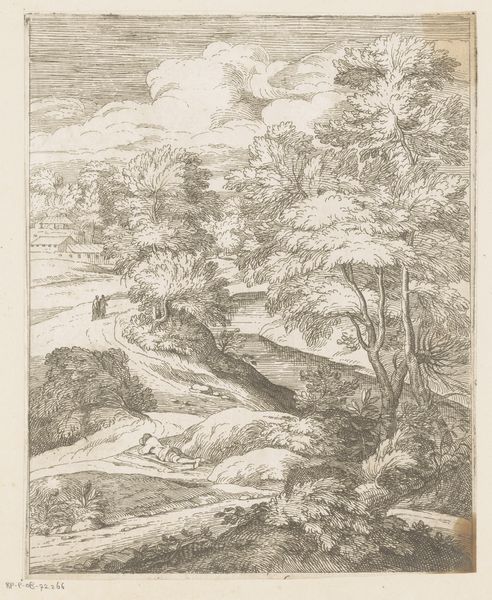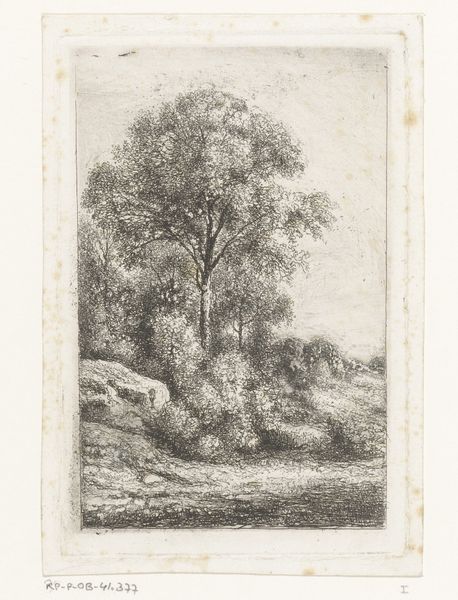
print, etching
# print
#
etching
#
landscape
#
etching
#
realism
Dimensions: 86 mm (height) x 63 mm (width) (plademaal)
Curator: This is "Skovparti," a landscape scene rendered in etching, created sometime between 1750 and 1774 by B. Fluegge. It's currently part of the collection at the SMK, the National Gallery of Denmark. Editor: My first impression? A serene kind of busyness. The texture! There's so much intricacy packed into such a small-scale print. Curator: Indeed, the texture emerges from the artist's skilled manipulation of etching, and it creates a scene where land, trees, and sky vibrate. Think about the labour of creating a detailed plate with acid; then the paper, often handmade at this time. What resources went into its dissemination? Who was able to acquire or appreciate prints like this? Editor: That’s a critical point, contextualizing its production and consumption. Look closer—it depicts peasants with their animals in what appears to be an undisturbed idyll. But was that really the reality for those depicted, the agricultural class working those lands? Curator: What strikes me is the artist’s intent. Landscape in that period was rising in value in art circles. Fluegge isn’t merely depicting a pretty scene; he’s making an economic decision, producing a luxury good via readily available materials and skills. Editor: I agree. What can also not be missed is who and where were these prints going? Were they just commodities in urban art markets or were they shaping how land itself was perceived, contributing to narratives that suited powerful landowners. Whose voices are silent here? Curator: And the medium itself, etching. Its accessibility made printmaking a democratizing force but access and participation have often been overstated in social histories of art. Did peasants own landscape etchings or were the markets skewed toward middle class professionals, nobility? Editor: These types of pastoral scene tend to play on sentimentalized ideas. This reminds me of Marie Antoinette pretending to be a shepherdess! Art doesn’t simply reflect, it participates and promotes political messaging. Curator: Absolutely. Even an idyllic landscape conceals complex economic and social realities in the context of the 18th century. Appreciating the medium of etching used offers a glimpse of what's readily available to produce images, the means and method for replication in early consumer culture. Editor: Examining the cultural milieu allows for unpacking and scrutinizing images that shaped the imagination and ideology of their time. To reveal underlying inequalities requires careful visual and material analysis. Curator: Precisely. The materials, method, and markets through which this art was exchanged offers another insight. Editor: Understanding its historical and social context allows to reevaluate "Skovparti's" significance, in terms of politics and production of an object and meaning.
Comments
No comments
Be the first to comment and join the conversation on the ultimate creative platform.
